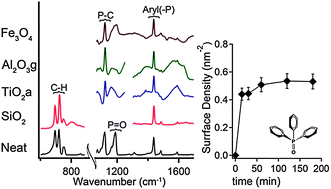Surface modification of metal oxides by polar molecules in a non-polar, polarizable solvent system†
Abstract
Oxide and metal oxide (MO) nanoparticles are widely used in various applications. A simple yet general approach for modifying MO surfaces using polar compounds in a non-polar but polarizable solvent is presented. Molecular adsorption onto the MO surface is based on dipole–dipole interactions while solvation relies on induced-dipole–dipole interactions.

- This article is part of the themed collection: 2014 Emerging Investigators

 Please wait while we load your content...
Please wait while we load your content...